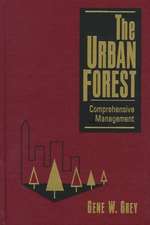Sustainable Landscape Planning: The Reconnection Agenda
Autor Paul Selmanen Limba Engleză Paperback – 15 iun 2012
| Toate formatele și edițiile | Preț | Express |
|---|---|---|
| Paperback (1) | 461.66 lei 6-8 săpt. | |
| Taylor & Francis – 15 iun 2012 | 461.66 lei 6-8 săpt. | |
| Hardback (1) | 1335.94 lei 6-8 săpt. | |
| Taylor & Francis – 15 iun 2012 | 1335.94 lei 6-8 săpt. |
Preț: 461.66 lei
Nou
Puncte Express: 692
Preț estimativ în valută:
88.35€ • 91.90$ • 72.94£
88.35€ • 91.90$ • 72.94£
Carte tipărită la comandă
Livrare economică 14-28 aprilie
Preluare comenzi: 021 569.72.76
Specificații
ISBN-13: 9781849712637
ISBN-10: 1849712638
Pagini: 176
Ilustrații: 29 black & white illustrations, 10 black & white tables
Dimensiuni: 156 x 234 x 10 mm
Greutate: 0.27 kg
Ediția:New.
Editura: Taylor & Francis
Colecția Routledge
Locul publicării:Oxford, United Kingdom
ISBN-10: 1849712638
Pagini: 176
Ilustrații: 29 black & white illustrations, 10 black & white tables
Dimensiuni: 156 x 234 x 10 mm
Greutate: 0.27 kg
Ediția:New.
Editura: Taylor & Francis
Colecția Routledge
Locul publicării:Oxford, United Kingdom
Cuprins
1. Landscape – Connections and Disconnections 2. Functions, Services and Values of Landscapes 3. Change and Resilience in Landscapes 4. Physical Connections in Landscapes 5. Social Connections in Landscapes 6. Landscape Connectivity in the Future: Thinking and Doing
Recenzii
"This book would be appropriate for undergraduate students and those interested in sustainable natural resource management. […]Certainly, better connections between city and countryside and society and nature are important issues in both the New and Old World." Brock Paciejewski and John Shults, Ecosystem Science and Management Program, University of Northern British Columbia, Canada, in the International Journal of Wilderness
Descriere
This book takes as its starting point the need to examine critically the case for landscape reconnection. It looks at alleged disconnections and their supposed consequences. It explores the arguments about reconnecting the natural and human elements of whole landscapes. More broadly, it considers landscape as an arena within which science, humanities and professions can find common ground, and in which vivid social learning can occur about key social and environmental issues. It takes a dynamic view of landscape, in contrast to the popular image of timeless, traditional scenery. It accepts that even the most cherished cultural landscapes will change and, indeed, it views ‘change drivers’ as a potentially positive means of creating new connectivities between people and place. It recognises the growing interest in creating new ‘space’ for wildlife and water, since re-connection cannot occur unless there is sufficient elbow room for system processes to establish a dynamic equilibrium.

















